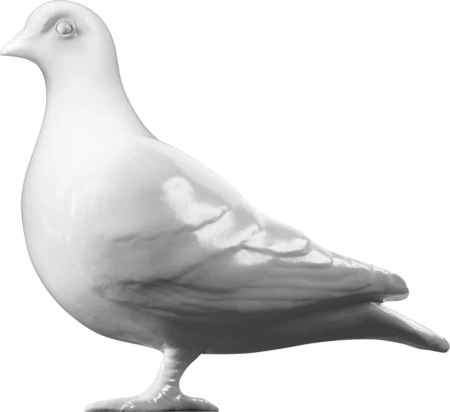Roman — Roman; 200-400
Sarcophagus
White marble sarcophagus (coffin), one side decorated with a portrait bust depicting the deceased. The Latin inscription reads ‘G[AIUS] ETRUS[C]US ATI[AE] / CARISSIMA[E S]UAE / MERITIS EIUS’, meaning ‘Gaius Etruscus set this up to his dearest Atia for her merits’.
Above the altar and set within a clipeus is a veiled, perhaps togate, portrait bust of the deceased with her right arm shown emerging to grasp the folds. In the spandrels on either side of the clipeus are small dolphins. Flanking the central altar and clipeus are two matching sets of eighteen stopped flutings. There are corner pilasters at the ends. The sides and back are plain, but the sides have rectangular cramp recesses with cylindrical holes at end. Claw tool-marks are visible on the dressed left hand end.
Sarcophagi that are strigillated vertically in this manner are rare, but another is known from London (accession 51.75). More usual are s-shape vertical flutings or s-shapes at an angle, like those seen on the sarcophagus from Haydon Square at the British Museum (see British Museum reg. no. PRB 1853.6-20.1-2; S. Walker, 'Catalogue of Roman Sarcophagi in the British Museum', CSIR GB, II.2).
Found in 1867 in Clapton, Hackney, the burial hints at a small settlement or wealthy farmstead near the River Lea. Roman cemeteries were by law sited outside town boundaries. Burials have been found around Londinium (Roman London) itself and outside the Roman settlements in greater London.
- Category:
- Roman
- Object ID:
- 3381
- Object name:
- sarcophagus
- Object type:
- Artist/Maker:
- —
- Related people:
- Related events:
- Related places:
- Production date:
- Roman; 200-400
- Material:
stone, marble
- Measurements/duration:
- L 2035 mm, W 520 mm, H 489 mm, WT 550 kg
- Part of:
- —
- On display:
- —
- Record quality:
- 100%
- Part of this object:
- —
- Owner Status & Credit:
Permanent collection
- Copyright holder:
digital image © London Museum
- Image credit:
- —
- Creative commons usage:
- —
- License this image:
To license this image for commercial use, please contact the London Museum Picture Library.
